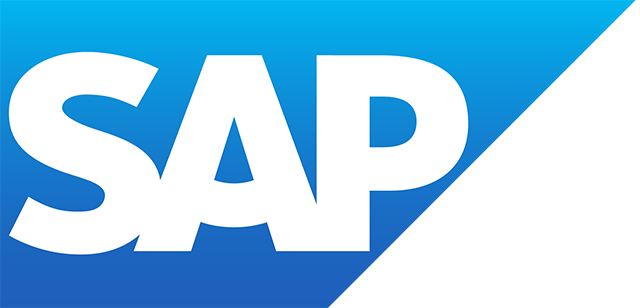SAP Enterprise Architecture Tools
Filter By
Browse By
- SAP Analytics and AI
- SAP Application Development and Integration
- All SAP Application Development and Integration
- SAP ABAP
- SAP ABAP Development Tools
- SAP ABAP Test Cockpit
- SAP API Management
- SAP BAPI
- SAP Basis
- SAP BRF
- SAP Business Application Studio
- SAP CMS
- SAP Design Studio
- SAP Development Tools
- SAP DevOps
- SAP EAI
- SAP EDI
- SAP Extension Suite
- SAP Fiori
- SAP Fiori Elements
- SAP Integration Suite
- SAP Low Code Application Development
- SAP Low Code Automation
- SAP Netweaver
- SAP Release Management
- SAP UI5
- SAP Web Application Server
- SAP Web IDE
- SAP Business Process Management
- SAP Center of Excellence
- SAP CIO
- SAP Customer Experience
- SAP Data and Data Management
- All SAP Data and Data Management
- SAP BW
- SAP BW/4HANA
- SAP Crystal Reports
- SAP Data Archiving
- SAP Data Center
- SAP Data Governance
- SAP Data Integration
- SAP Data Migration
- SAP Data Quality
- SAP Data Services
- SAP Data Strategy
- SAP Data Visualization
- SAP Data Warehouse Cloud
- SAP DMS
- SAP Document Control
- SAP EIM
- SAP ETL
- SAP ETL Tools
- SAP HANA
- SAP HANA Administration
- SAP HANA Deployment Infrastructure
- SAP HANA Studio
- SAP Master Data
- SAP Master Data Governance
- SAP MDM
- SAP Enterprise Architect
- SAP Enterprise Asset Management
- SAP ERP
- SAP Finance
- All SAP Finance
- SAP Accounting
- SAP AR AP
- SAP Asset Accounting
- SAP Billing Systems
- SAP BPC
- SAP BRIM
- SAP Cash Management
- SAP Central Finance
- SAP Controlling
- SAP COPA
- SAP Cost Center Accounting
- SAP Currency Risk
- SAP e-invoicing
- SAP FICO
- SAP Finance Automation
- SAP Advanced Financial Closing
- SAP Financial Consolidation
- SAP Financial Planning
- SAP FX Risk
- SAP General Ledger
- SAP Global Tax Management
- SAP Hyperion
- SAP Order to Cash
- SAP Payment Processing
- SAP Profitability Analysis
- SAP Rebate Management
- SAP S/4HANA Finance
- SAP SWIFT Compliance
- SAP Treasury Management
- SAP Universal Journal
- SAP Governance Risk and Compliance
- SAP Human Capital Management
- SAP Intelligent Technologies
- SAP Platform and Technology
- All SAP Platform and Technology
- SAP Business Technology Platform
- SAP Cloud Connector
- SAP Cloud Integration Platform
- SAP Cloud Migration
- SAP Cloud Platform
- SAP Cloud Providers
- SAP Cloud Strategy
- SAP Digital Signature
- SAP Container Platform
- SAP HANA Enterprise Cloud
- SAP Digital Asset Management
- SAP HEC
- SAP Digital Integration Hub
- SAP Hyperscalers
- SAP Infrastructure
- SAP Messaging
- SAP Smart Forms
- SAP Quality and Testing
- SAP Security
- SAP Spend Management
- SAP Supply Chain Management
- All SAP Supply Chain Management
- SAP APO
- SAP Asset Management
- SAP Business Network
- SAP Digital Manufacturing Cloud
- SAP Digital Twin
- SAP EWM
- SAP IBP
- SAP Inventory Management
- SAP Label Printing
- SAP Logistics
- SAP Manufacturing
- SAP Manufacturing Automation
- SAP MES
- SAP MII
- SAP MM
- SAP MRO
- SAP MRP
- SAP Order Management
- SAP Plant Maintenance
- SAP PLM
- SAP Production Planning
- SAP S&OP
- SAP SD
- SAP SPM
- SAP Supply Chain Planning
- SAP Track and Trace
- SAP Transportation Management
- SAP System Administration
What are SAP Enterprise Architecture Tools?
Enterprise Architecture (EA) tools allow organizations to examine the need for, as well as the impact of, change. They are intended to map the relationships and dependencies across partners, operating models, capabilities, people, processes, data, information, and applications and technologies. They are designed to provide a central repository to capture information that are important to an organization. EA tools are intended to help both investment decisions and, when combined with operational data, can help improve business processes and outcomes.
What are SAP Enterprise Architecture Tools?
Enterprise Architecture (EA) tools allow organizations to examine the need for, as well as the impact of, change. They are intended to map the relationships and dependencies across partners, operating models, capabilities, people, processes, data, information, and applications and technologies. They are designed to provide a central repository to capture information that are important to an organization. EA tools are intended to help both investment decisions and, when combined with operational data, can help improve business processes and outcomes.
There are many products in the Enterprise Architecture (EA) tools market, but the most familiar for SAP Enterprise Architects is likely SAP Enterprise Architecture (EA) Designer. SAP EA Designer is a web-based tool that is intended for collaboration between enterprise architects and the stakeholders in their organization. The collaborative nature of SAP EA Designer differentiates from some older EA tools. It is only by using EA tools that organizations can provide IT transparency and make complex topics easy to discuss for stakeholders.
Organizations that are implementing SAP Enterprise Architecture Tools should focus on the following best practices:
- Start with business definitions
- Integrate with any continuous improvement initiatives
- Build an experienced team that can communicate at all levels
- Limit or eliminate technology jargon
- Understand how SAP’s standard tools can assist with your initiative
- Leverage the experience of partners where appropriate
Standard SAP tools that can provide insight into enterprise architecture initiatives and that can complement your SAP Enterprise Architecture Tools initiatives include:
- SAP Enterprise Architecture Framework
- SAP Solution Manager
- SAP Solution Landscape Directory
- SAP NetWeaver Enterprise Services Repository
Additional Resources:
SAP offers multiple openSAP courses that are relevant to enterprise architects, and one that may be a good starting point is that on Enterprise Architecture in the Era of the Intelligent Enterprise. SAPinsider also recently conducted a SAP Enterprise Architect Global Summit and the sessions for this event can be viewed on-demand.
1269 results
-

 Premium
Premium
ITSmobile: A New Technology for Warehouse RF Applications
Reading time: 24 mins
/MobileEvaluate ways ITSmobile can enhance your warehouse operations. Get valuable implementation tips and insights to consider. Key Concept Internet Transaction Server mobile (ITSmobile) replaces WebSAPConsole as the latest SAP technology for developing mobile data entry applications using GUI-based handheld computers. ITSmobile allows the user to execute warehouse radio frequency (RF) transactions on the mobile browser...…
-

 Premium
Premium
Enable Real-Time Integration with Manufacturing Automation Using SAP MII
Reading time: 18 mins
Learn how to integrate SAP Manufacturing Integration and Intelligence (SAP MII) with manufacturing automation systems using SAP Plant Connectivity (PCo) by query and notification agents for real-time process visibility in manufacturing operations. Understand the use cases of process event management by connecting to different types of manufacturing automation source systems and SAP MII as the...…
-

- SAP APO
 Premium
Premium
How to Reduce the Bullwhip Effect by Following a Demand-Driven Supply Chain Strategy
Reading time: 26 mins
Learn how to integrate consumer demand signals to achieve a demand-driven supply chain that is used to optimize short-term forecasts and increase demand network visibility. From a demand planning perspective, planners can now compare the traditional consensus demand forecasts with a point-of-sale (POS) statistical forecast and therefore apply corrections based on true consumer demand. From...…
-
-

 Premium
Premium
21 Tips for Managing a Multi-Project BW Implementation
Reading time: 12 mins
/Project ManagementAt some point, your BW project team may be faced with several implementation projects occurring at the same time. Because of the highly shared nature of objects in the BW architecture, this scenario can cause significant problems for the project management team. The authors share their expertise in coping with such situations and offer...…
-

 Premium
Premium
UDConnect in SAP BW 3.5 Enhances Native Data Acquisition
Reading time: 21 mins
The SAP BW ETL services layer in BW 3.5 features UDConnect, which allows users to extract data from a variety of sources. The authors introduce this new functionality and examine its advantages. They also provide an example of a common use scenario. Since the launch of SAP BW, users have demanded the ability to...…
-

A New ABAP Programming Model for Digital Business
Reading time: 12 mins
With digitization a top priority, many organizations are preparing to transition to SAP S/4HANA and its built-in support for business operations in the digital age. To meet the needs of this new type of deployment — which requires cloud qualities at large scale and full support for SAP HANA and SAP Fiori — SAP has…
-

Simplified Interface Handling in a Digital Business Landscape
Reading time: 12 mins
Efficient integration and seamless data exchange are critical in a digital business landscape that spans a growing network of integrated systems and applications. Organizations must find the best way to manage the entire interface life cycle — from implementation through ongoing maintenance and operations. Learn how SAP Application Interface Framework 3.0 not only provides an…
-
-

- SAP Supply Chain Planning
 Premium
Premium
Hyperscalers Focus on Supply Chain Platforms
Reading time: 5 mins
Supply chain planning solutions space has been a crowded and competitive segment for decades. As technology capabilities progress, we see more and more entrants in the segment, trying to compete with established players. However, a key fact of this space is that while bells and whistles may differ, the core features and functionalities remain the…
-

- SAP Analytics
 Premium
Premium
The Three Ss of Cloud Market Dominance
Reading time: 3 mins
There is no doubt that cloud infrastructure will redefine how organizations build their technology capabilities and how they innovate. This has emerged as a consistent theme in our research and conversations with the SAPinsider community. Our research reports like Future of Business Intelligence, Analytics in The Cloud, Modernizing Logistics and Inventory Tracking, and Supply Chain…
-

- SAP Migration Strategy
 Premium
Premium
Inside Verizon’s Transformation
Reading time: 8 mins
Verizon recently underwent a significant transformation, aligning its corporate structure and modernizing technologies. Following her keynote speech at SAPinsider Vegas 2023, Verizon Global Technology Solutions’ Jane Connell, SVP and CIO of Corporate Systems, gave an exclusive interview to SAPinsider. Connell addressed how she made her company’s transformation a success, the tough decisions she and the…
Become a Member
Unlimited access to thousands of resources for SAP-specific expertise that can only be found here.
Become a Partner
Access exclusive SAP insights, expert marketing strategies, and high-value services including research reports, webinars, and buyers' guides, all designed to boost your campaign ROI by up to 50% within the SAP ecosystem.
Upcoming Events
Related Vendors
Your request has been successfully sent

